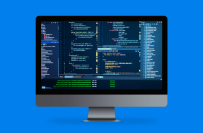TARGETED (Targeted Genome Editor Delivery) Challenge Phase 2
TARGETED (Targeted Genome Editor Delivery) Challenge Phase 2
Open
Prize:
$250,000 USD
Entries Received:
0
14 days, 12 hours remaining
Contest bookmarked successfully!
Targeted Genome Editor Delivery (TARGETED) Challenge - Phase 2
You need to fill out the Registration Form
Subject of the Challenge
Recent advancements in the genome editing technology field have enabled scientists to manipulate genomic sequences rapidly and efficiently. Despite revolutionary progress in this area, several challenges remain. Existing gene editing technologies like CRISPR-cas9, base editors and prime editors have great potential, but existing delivery technologies are not able to deliver gene editing technologies to many target tissues and cell types in sufficient quantities, which hinders clinical applications. While some cell types, like hepatocytes in the liver, have many delivery technologies capable of delivering genome editors, there are many other organs and cell types that are harder to reach.
The Targeted Genome Editor Delivery (TARGETED) Challenge is a $6,000,000 challenge to improve the current state of in-vivo delivery technologies for genome editors in two Target Areas: 1. Programmable Delivery System for Gene Editing, and 2. Crossing the Blood-Brain Barrier.
The National Institutes of Health (NIH), through the Common Fund’s Somatic Cell Genome Editing
Phase 2
In Phase 2, Participants must submit data from studies that demonstrate delivery and editing performance as well as describe their methodology, technology, and how their solution addresses the Challenge criteria. Participation in Phase 1 is not a requirement for participation in Phase 2; however, it is strongly encouraged. Up to 10 winners of Phase 2 will be each awarded $250,000 and will be eligible to compete in Phase 3.
Only Phase 2 winners will be eligible to participate in Phase 3.
Phase 3
Phase 3 is separated into Phase 3a and 3b; all Participants must submit solutions for Phase 3a to be eligible to participate in Phase 3b.
For Phase 3a, Participants must submit all required information showing that their technology is ready for large animal testing through NIH-supported independent evaluation andhas the ability to solve the requirements for one of the Target Areas.
Up to 6 Participants will each be awarded $50,000 and will then prepare for reagent scale up and protocol development for NIH-supported large animal testing.
Participants who submit their reagents and protocols by the deadline for Phase 3b will have access to NIH-funded independent large animal testing to validate their solution. NIH will review the results and only award prizes to Participants whose solutions meet or exceed the criteria.
The top successful solution in each Target Area will be awarded $625,000; the second place solution in each Target Area will be awarded $225,000; the third place solution in each Target Area will be publicly recognized and given an honorable mention award. Participants who participate successfully in all three phases could be awarded up to $1,000,000 in each Target Area.
Final (Phase 3) Solution Requirements
Target Area 1: Programmable Delivery System for Gene Editing
Solutions must be a highly efficient and programmable delivery system to deliver genome editing machinery that can target specific tissues (cells, types, and/or organs). Solutions must be able to be programmed to deliver to at least three distinct and different cell(s), tissue types, and/or organs and with delivery and editing capability that is at least as efficient as the current state of the art. An optimal solution would be straightforward to manufacture, low-cost, scalable and have a reasonable safety profile. Solutions that propose viruses and viral-like systems or particles must build on the field and meet the criteria demonstrating full understanding of how the delivery system can be modified so that it is programmable and can target a variety of different tissue targets (cells, types, and/or organs). The solution will be judged on how well it meets the criteria.
Programmable solutions that only target central nervous system (CNS) targets should be submitted under Target Area 2. Solutions that meet the requirements for Target Area 2 but also are programmable to target a non-brain organ may be submitted for consideration in both Target Areas, though a single team and/or entity with a single solution that meets the requirements of both Target Areas are only eligible for one prize. A team and/or entity may be eligible for multiple prizes for multiple solutions submitted to either or both Target Areas, as long as the solutions are qualitatively different.
To be highly competitive in this Challenge, solutions must:
Be programmable and target at least three distinct and different cell (s), tissue types, and/or organs.
Be able to deliver an editor and demonstrate delivery and editing that be at least as efficient as the current published efficiencies for the different tissue targets (cells, types, and/or organs) proposed.
Have a known biological mechanism for programmability: a clear relationship between what is done to modify the technology to deliver to different tissue targets (cells, types, and/or organs) and how this relates to the underlying biology and/or biochemistry of the system.
Have conducted studies that demonstrate biodistribution and route of administration/delivery method.
Demonstrate successful delivery and editing performance in large animals through NIH-supported independent evaluation.
Have demonstrated a safety profile in experimental models consistent with other gene therapy/gene editing delivery systems intended for use in humans.
Solutions should also have these desired traits:
Target more than one tissue/organ type.
Be innovative in approach.
Additionally, solutions could :
Demonstrate market potential, competitive advantage, or potential to meet unmet medical needs.
Be able to be manufactured in a scalable and cost-effective manner.
Target Area 2: Crossing the Blood-Brain Barrier (BBB)
Solutions to Target Area 2 must be highly efficient, non-viral delivery systems capable of crossing the BBB to deliver genome editing machinery to a substantial proportion of clinically relevant cell types in the brain.
To be highly competitive in this Challenge, solutions must :
Be able to traverse the BBB in vivo.
Be able to deliver an editor and demonstrate delivery and editing in a substantial proportion of clinically relevant cell types in the brain.
Be a non-viral delivery technology. Solutions may be virus-like particles and/or incorporate components of viruses in the proposed delivery technology. Solutions that are modifications of recombinant adeno-associated viral vectors do not meet this criterion.
Demonstrate successful delivery and editing performance in large animals through NIH-supported independent evaluation.
Have demonstrated a safety profile in experimental models consistent with other gene therapy/gene editing delivery systems intended for use in humans.
Solutions should also have these desired traits:
Be innovative in approach.
Be able to be manufactured, ideally synthetically, in a scalable and cost-effective manner.
The SCGE program is led by the NIH Common Fund, the National Center for Advancing Translational Sciences (NCATS), and the National Institute of Neurological Disorders and Stroke (NINDS). The Brain Research Through Advancing Innovative Neurotechnologies (BRAIN) Initiative and the National Heart, Lung, and Blood Institute (NHLBI) are also contributors to this Challenge.
This Challenge is administered and managed with support from Freelancer.com under a contract awarded by the National Aeronautics and Space Administration (NASA) Center of Excellence for Collaborative Innovation on behalf of NIH.
Contact
If you have any questions, please contact our team at targeted_challenge@freelancer.com
Resources
Webinar recording: https://youtu.be/4CrGVW8Evc0
Webinar #2 (June 27, 2024) recording: https://youtu.be/ChY9q4CLXQo
Webinar Oct. 1, 2024 - PADP and Submission Tips: https://youtu.be/S-mJqgSYBcA
Skills Required
Medical Writing
Bioinformatics
Biology
Biomedical Engineering
Biotechnology
Chemical Engineering
Genetic Engineering
Medical
Medical Products
Medical Research
Accepted File Formats
pdf
Clarification Board
No spam, self-promotion or advertisement is permitted.
Clarification Board

Hi there, its nice to meet you. I am Afghan citizen but living in Pakistan as a foreigner. its my request that may you please allow this contest internationally, so that I can easily participate.
U
Hi,
I am an Electrical and Biomedical Engineer from Pakistan. This project is related to my field because I already worked on multiple medical based projects as an individual.
Tell me Can I register to work on this project as an individual from Pakistan?
How to register in your project as well?
Please guide me.
Thanks

Is this contest still open?

Is this contest still open?

Hi, I have done Chemical Engineering in DPI. I am waiting to work with you, I want to join your project.
Other similar contests
Completed contests
$20.00 USD
Posted by boisbois
Entry successfully submitted!

Getting started with contests?
1. Post your contest, it's fast and free
Join the thousands of entrepreneurs who are launching their contests every week and harnessing the awesome power of crowdsourcing.
2. Get tonnes of entries
You can request changes and revisions and only pay when you're satisfied.
3. Award the best entry
Award the winning entry and download the files - easy
Thanks! We’ve emailed you a link to claim your free credit.
Something went wrong while sending your email. Please try again.
Loading preview
Permission granted for Geolocation.
Your login session has expired and you have been logged out. Please log in again.

















